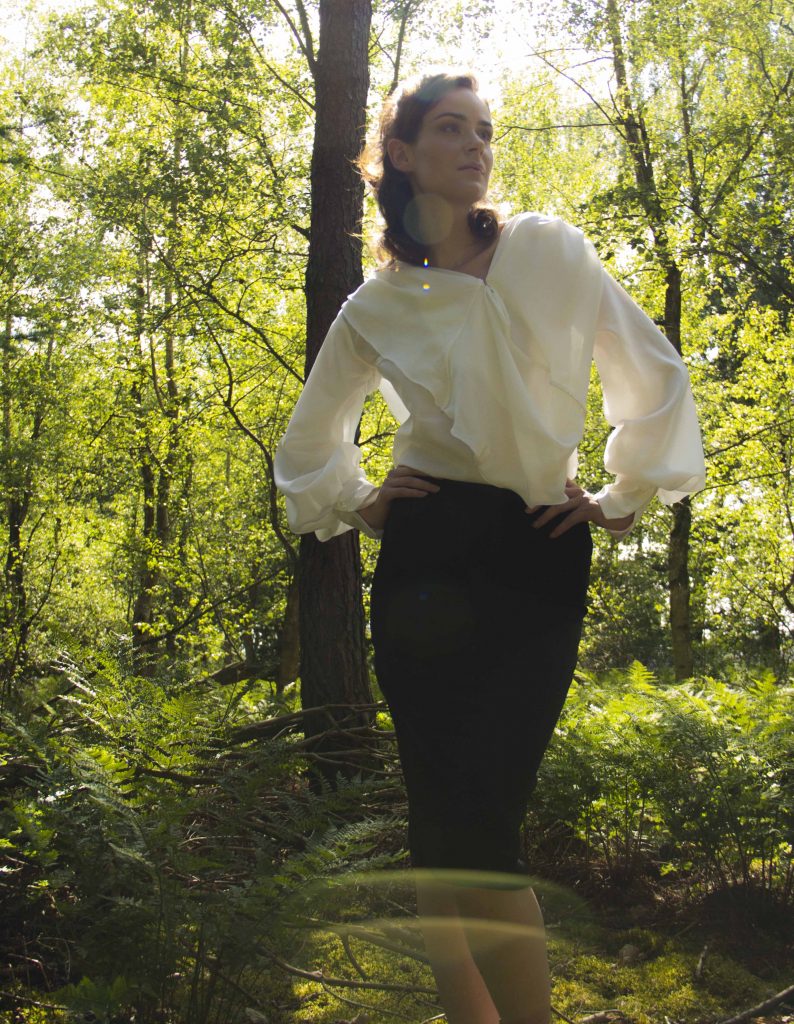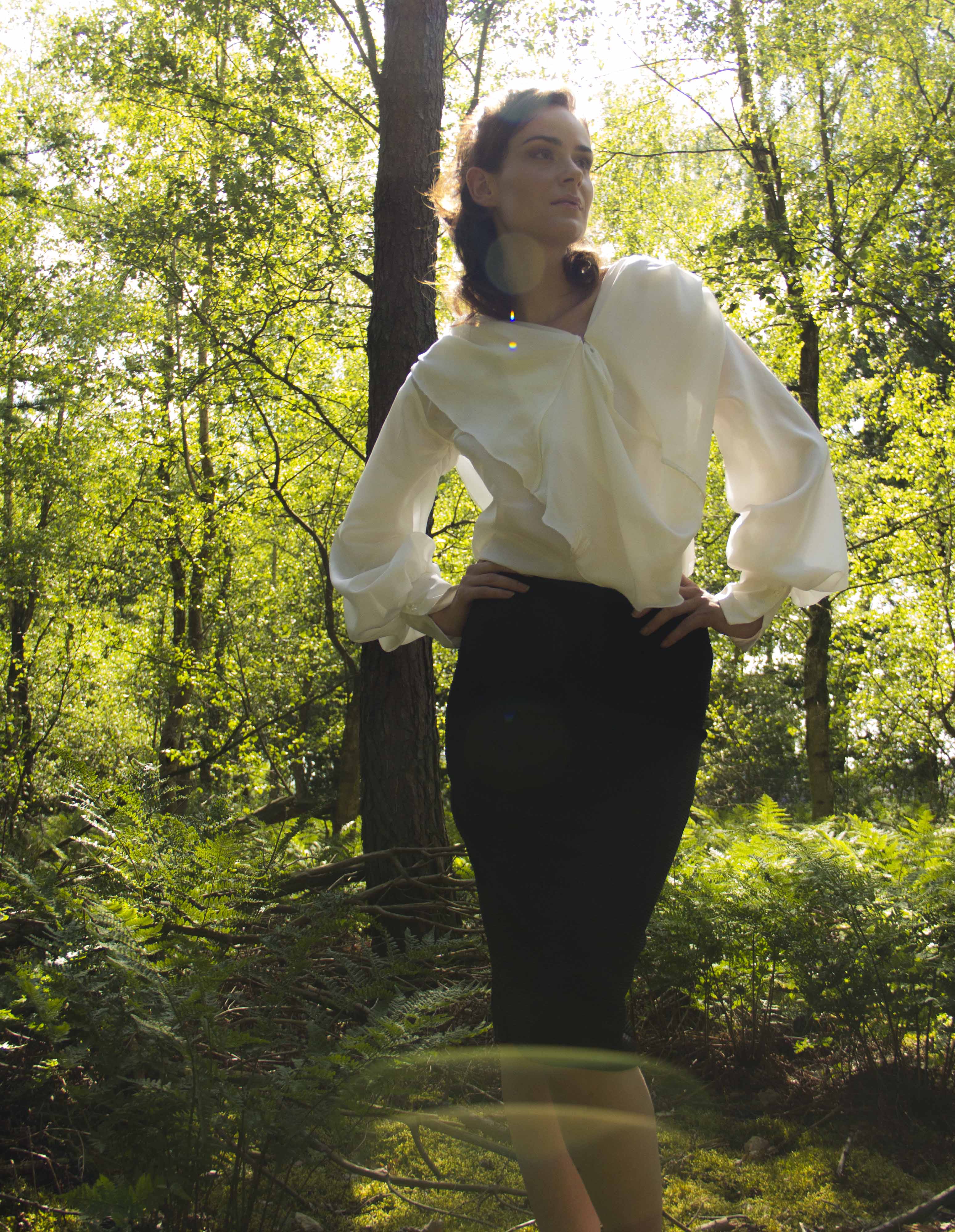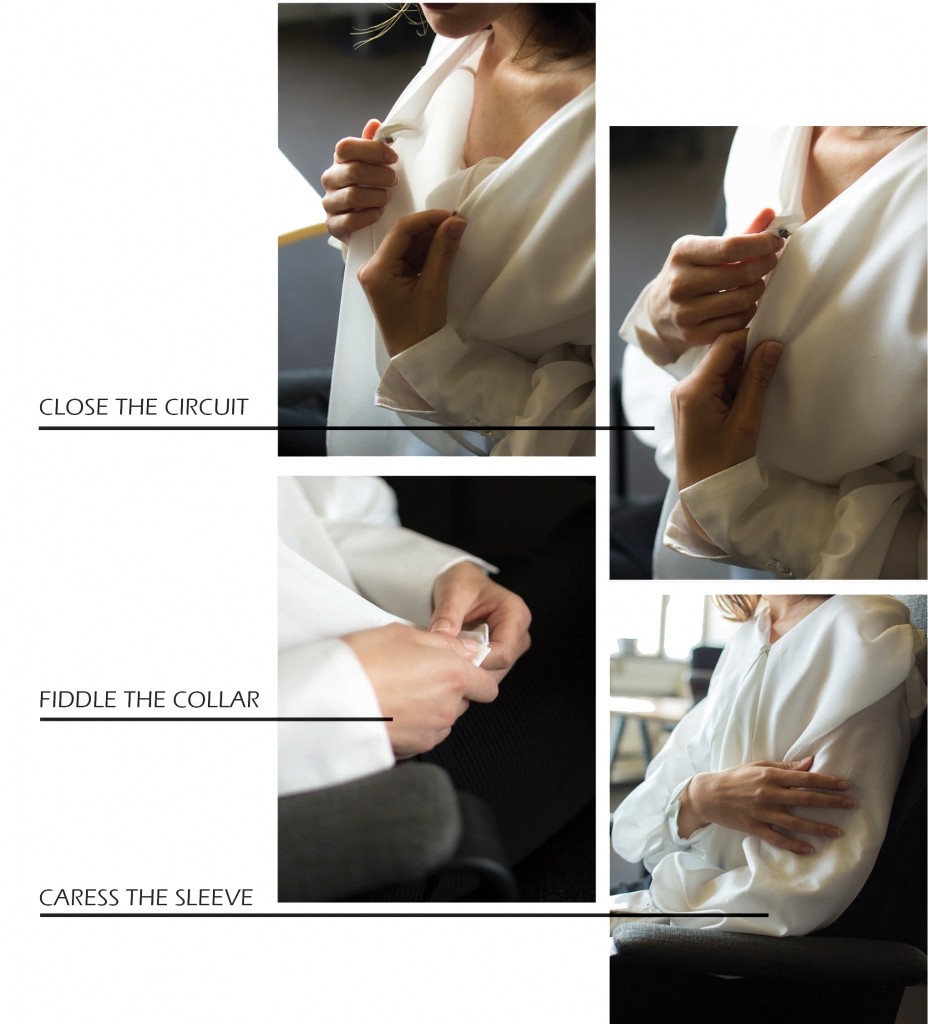An on-the-job recovery experience
Graduation Project
For most people in the world, clothing has become a disposable product that provides us with protection from the environment and displays our sense of style. But, the future of clothing is about to change with the rise of smart textiles. Ensō is a blouse designed for female employees that work in office environments aged 25 to 35 that are not able to relax from work.
Ensō provides an on-the-job recovery experience that can be accessed whenever the wearer feels like it. By using body and mind relaxation techniques a choice of electronics was made that could imitate bodily activities. These are a vibration motor that resembles a heartbeat at rest, a DC motor that mimics the movement of the body while breathing and LEDs that provide a breathing exercise for wearers to engage in.
My Passion in Design
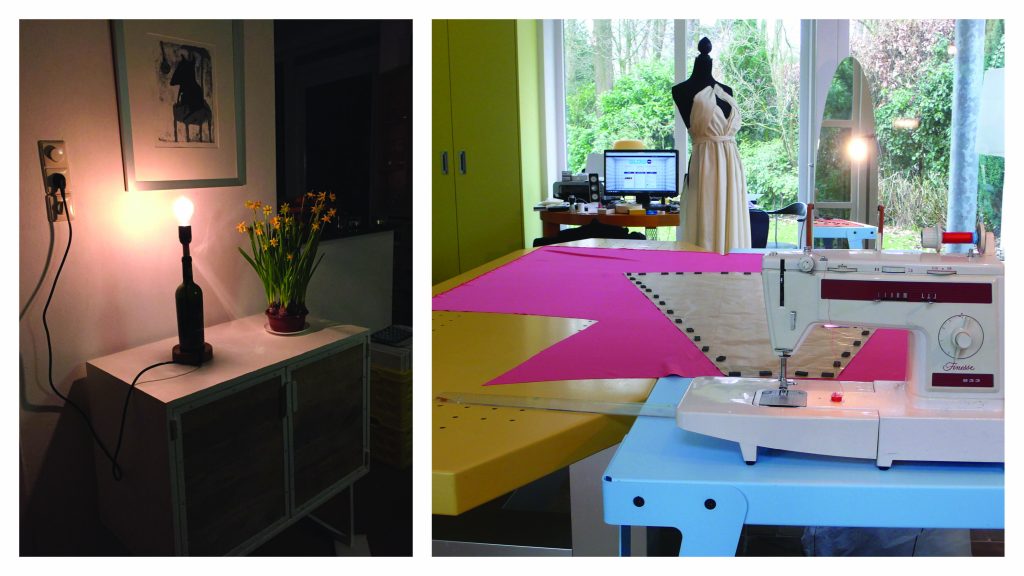
The unofficial start of my graduation happened almost 1,5 years ago when I wanted to find out what my passion is in design. I reflected upon previous projects, but also on my interests over time. It became clear that my passions for electronics and fashion have always been around. They are so familiar because of my family. My mum being an interior designer made it possible for me to explore different fabrics in her store as a kid and my dad being an electronic engineer for ASML taught me how fascinatingly small computer chips can be designed.
I wondered if it would be possible to combine my passions together for my graduation project. That’s how I learned about smart textiles. Other terminologies for smart textiles are smart clothing, smart wearables, e- and i-textiles, smart apparel and smart garments. Some examples can be found in the video below.
I decided before I could start my graduation I needed to know more about the fashion industry. Working 6 months for GHIMELLS resulted in the company’s first sustainable collection, researched, designed, branded and put together by me! You can read all about it further in this graduation blog post.
Smart textiles – A new garment feature which can provide interactive reactions by sensing signals, processing information and actuating the responses.
Talking to my chair professor dr. ir. Kaspar Jansen we decided to focus on one smart textiles technology, namely touch sensitive fibers which lead to the following research question for the project:
Research Question: How can I design a meaningful interaction using touch sensitive fibers in a garment?
What are Touch Sensitive Fibers?
The simplest comparison can be made with the capacitive phone screens. They work with anything that holds an electric charge, which includes human skin as well. The movie on the right will explain how they work.
The same principle works for capacitive fibers in textiles. The capacitive fibers hold the electric current and the textile functions like a passive layer; the capacitive fibers form the conducting part of the system and the textile forms the insulating part of the system.
Material research: Testing Touch Sensitive Fibers and Insulating Fabrics
To understand which insulator-conductor material combination creates a functional and comfortable garment a material study is needed. The set-up of the test is as follows. An Arduino Lilypad microcontroller is connected to a capacitive sensor as an input and an RGB LED as an output. During the material test stainless steel and silver conductive fibers will be fold into several insulating materials. Most promising insulating materials are denim, silk and viscose in combination with stainless steel.
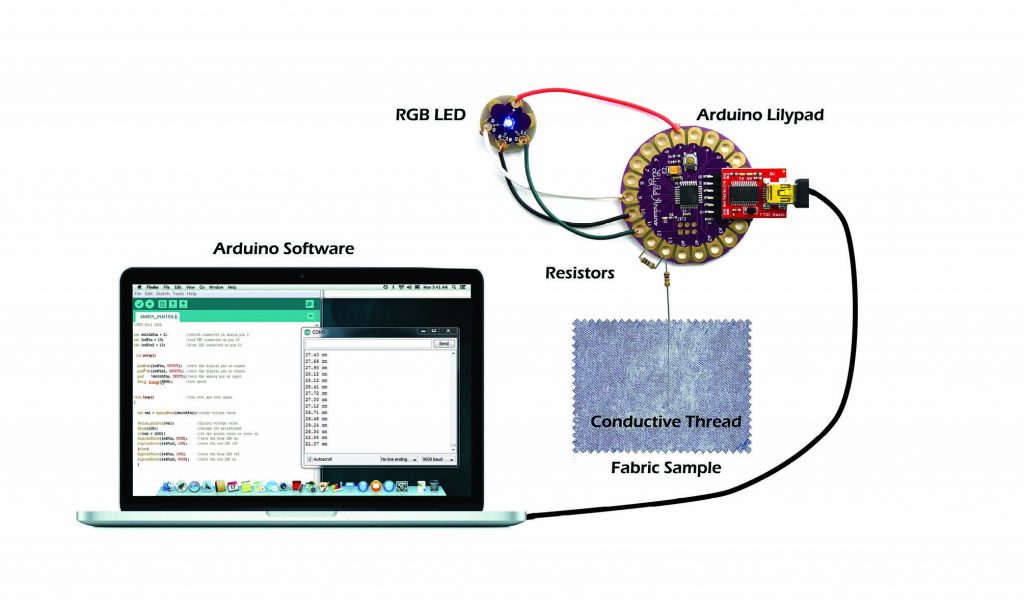
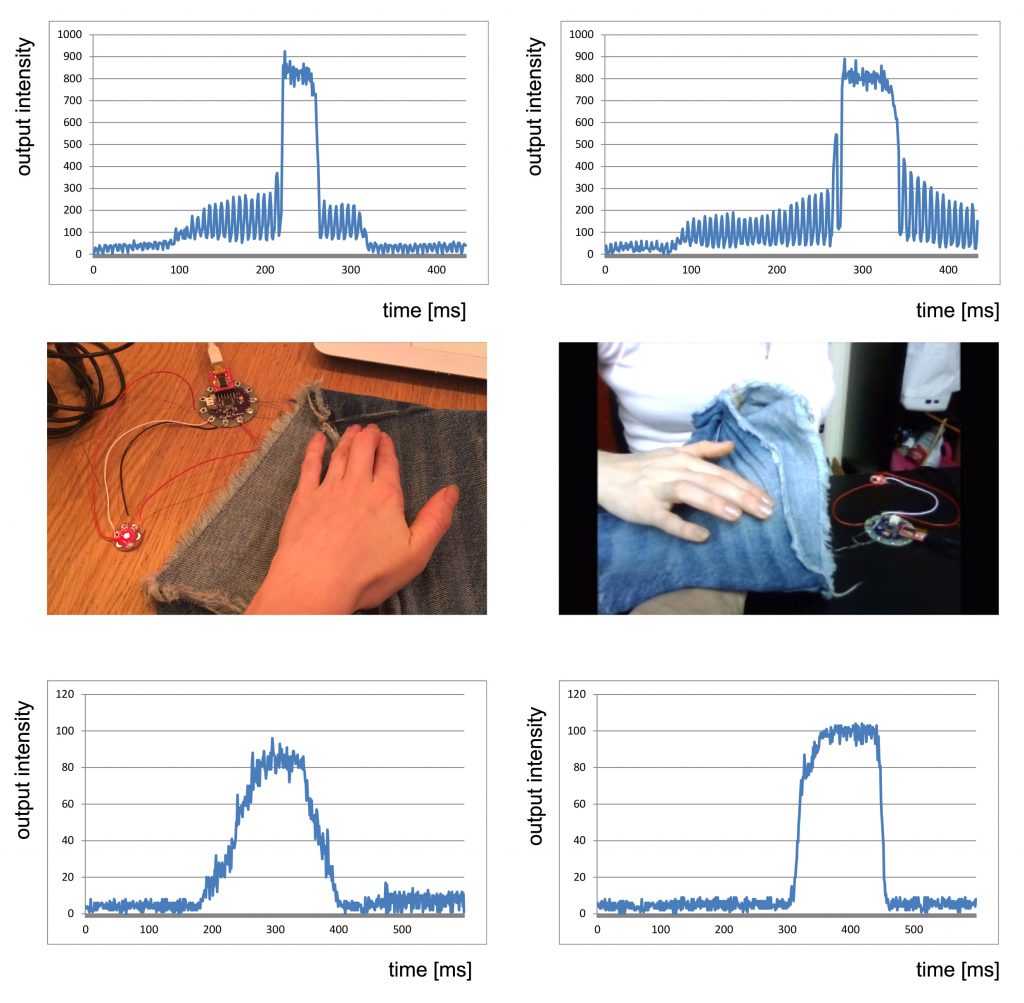
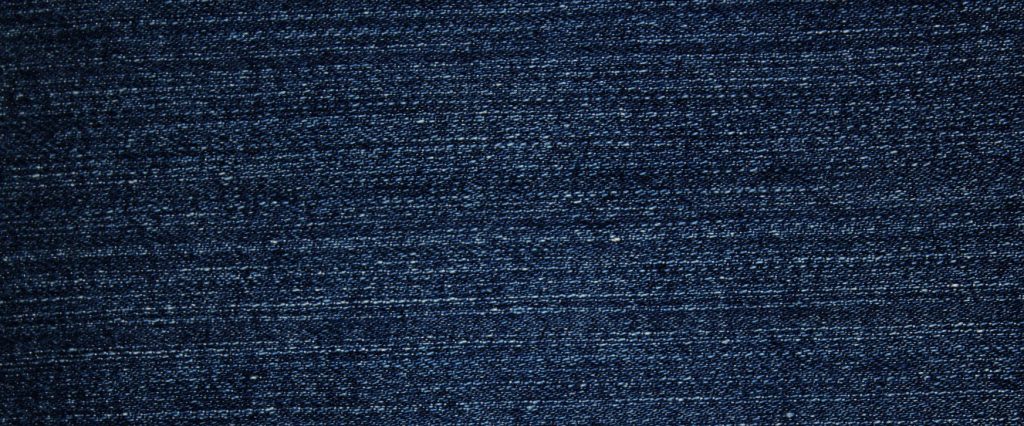
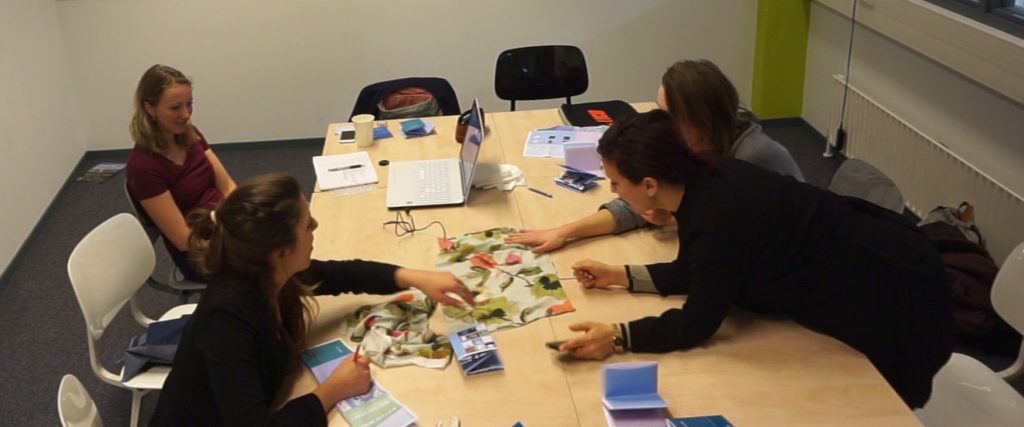
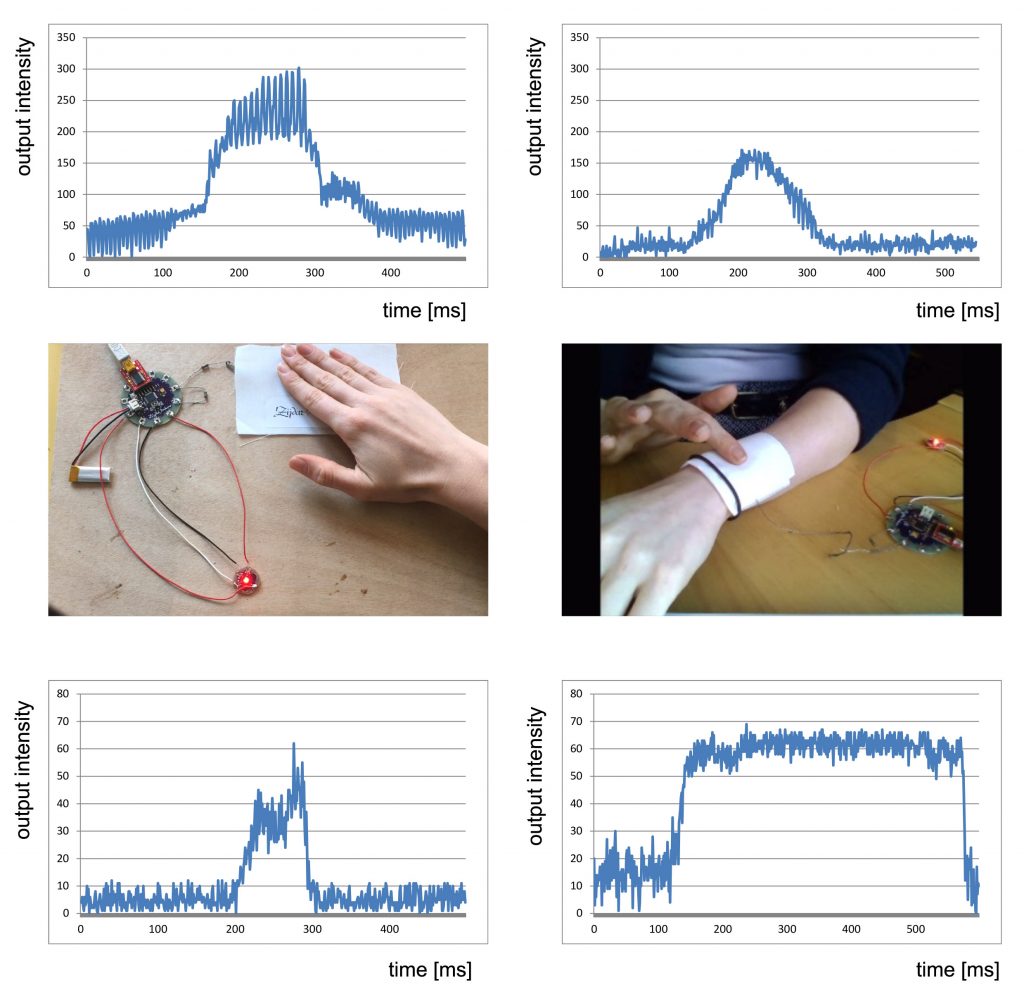
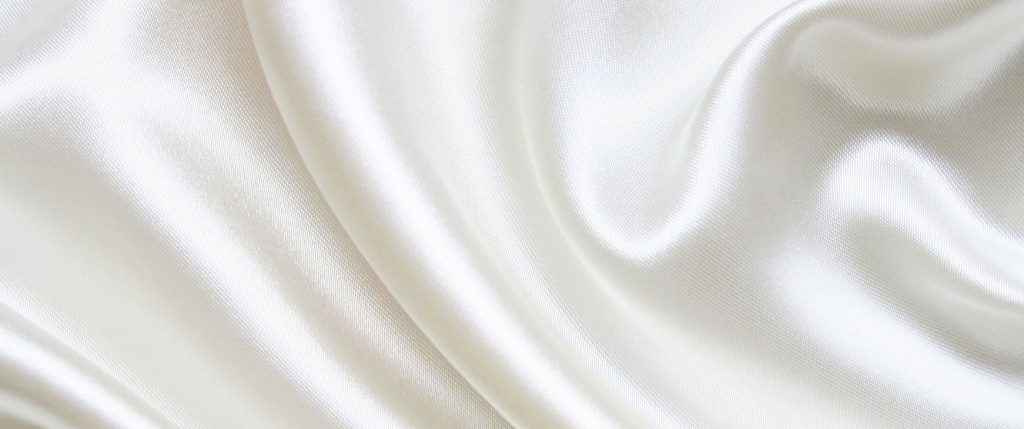
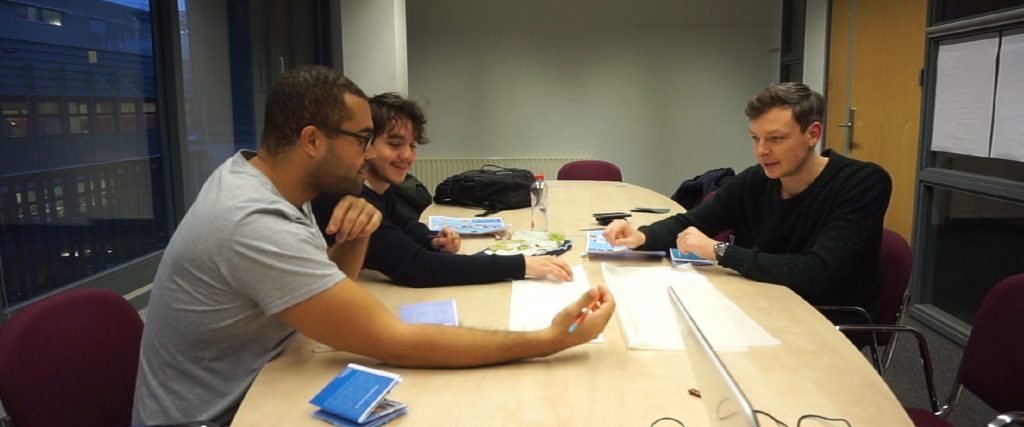
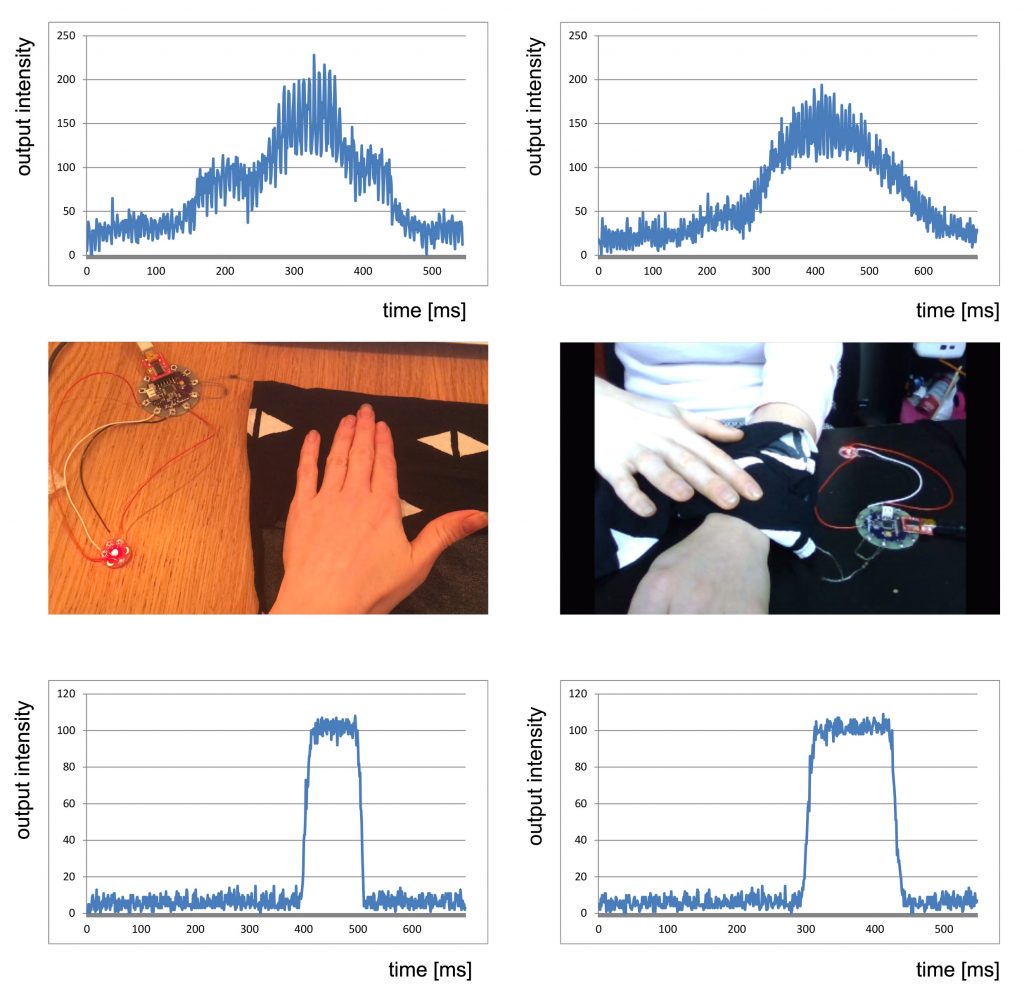
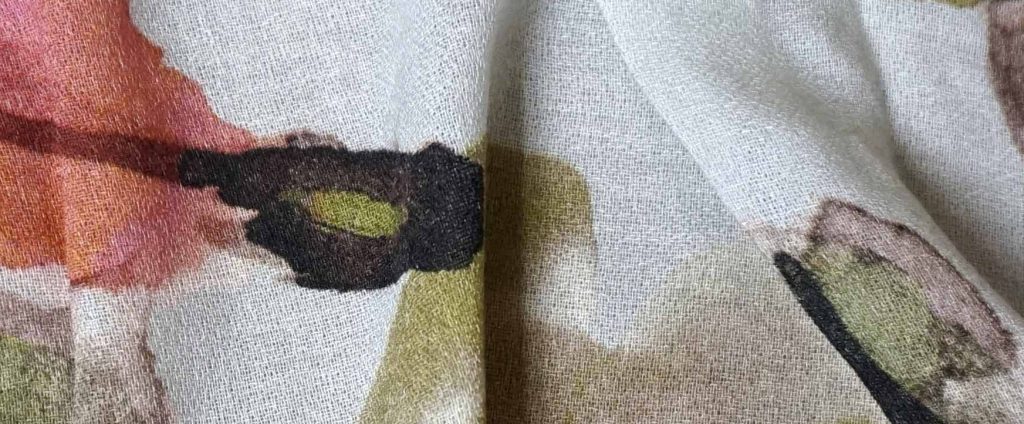
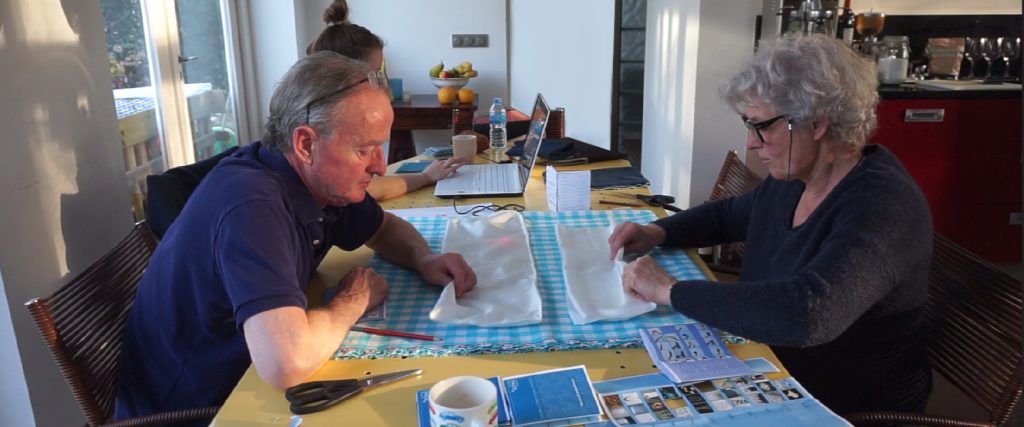
To conclude the material research, a practical study is organized where the Material driven design methodology by Karana will be used. It is a step-by-step approach where new materials will get a better design perspective. With use of this method three groups of participants were able to explore the material properties, the emotional characteristics and the expression of denim, silk and viscose in combination with a touch sensitive stainless steel fiber which is connected to a RGB led that responds to touch.
Final Material Choice
As a result stainless steel combined with silk shows the most promising combination in function as well as in creating new design possibilities and fitting user’s aesthetical needs. Visualizing the emotional values that were derived from the user research and combining them with the material properties creates an understanding about the uniqueness of the material combination. The moodboards below show the different sides of silk. For instance, silk can be playful but fragile and can be protective and ambiguous.
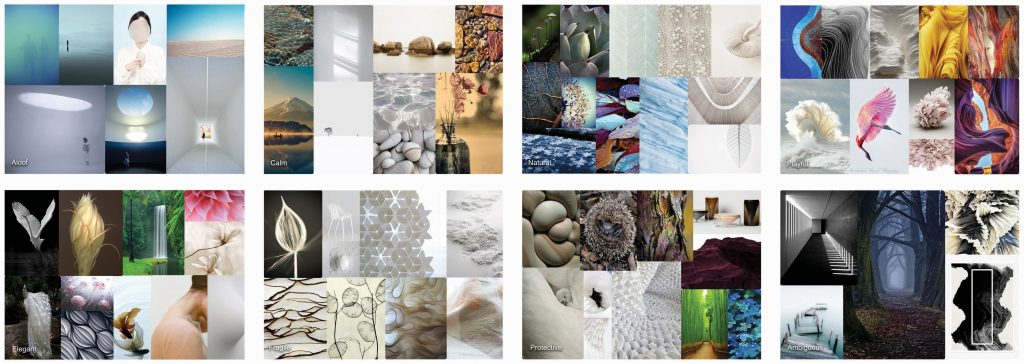
Choice of Context
Combining the emotional characteristics with the positive and negative material properties ultimately lead to finding a suitable and interesting context, namely professional wear. Professional wear is a direction that has not been researched intensely in literature and has a lot of connection to the emotional, material and aesthetic qualities of silk. Combining it with an intimate and relaxed experience would be an interesting challenge.
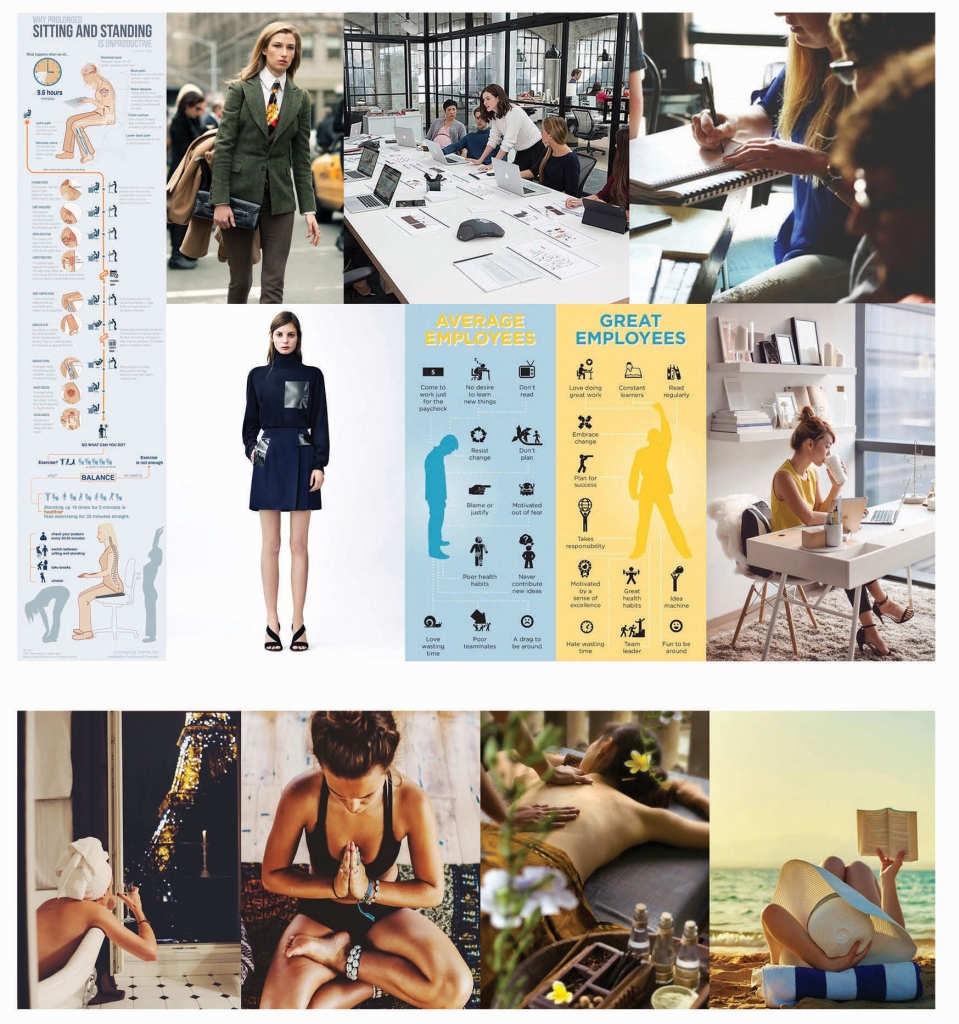
Context Research
To understand how silk and stainless steel as a smart textile can contribute in the professional context, the user needs have to be identified. Doing research with data presented in CBS database, it is clear that the Dutch employee population in some industries lack the needed amount of people to do the job. This results in experiencing a high workload. A smart garment could potentially help this target group to recover from their heavy workload.
Especially people aged 25 to 35 experience a higher level of workload compared to the other age groups. About 10 % of this group says they are not able to relax from work at all. Next to that, there is a big difference between how men and women experience their job. Data shows that women feel less in control (within the same industry as men) and experience a higher level of workload psychologically and physically.
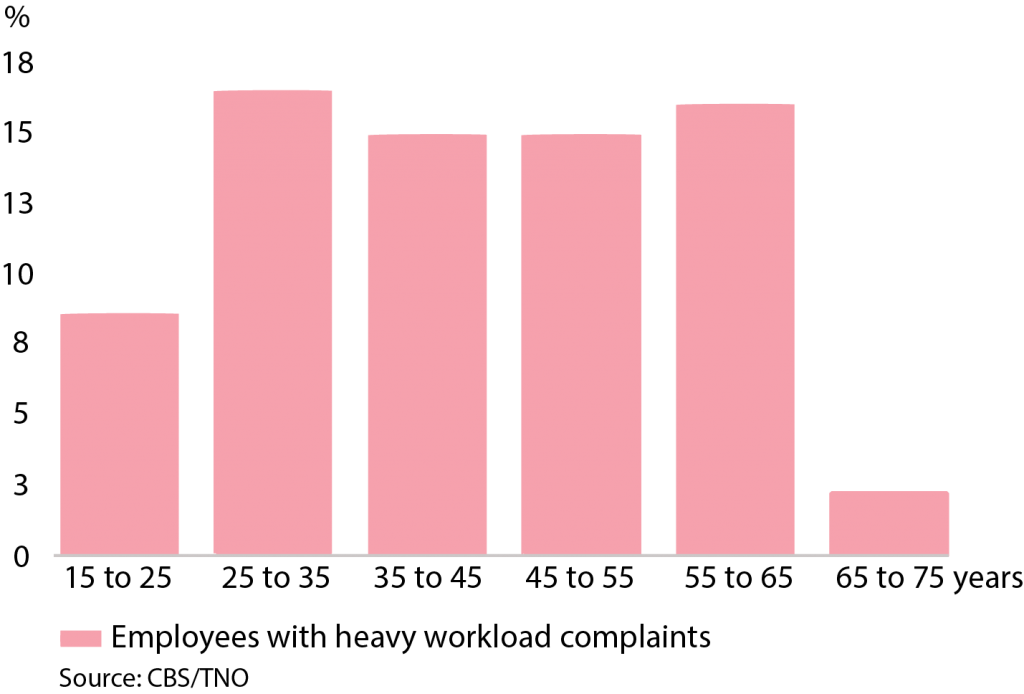
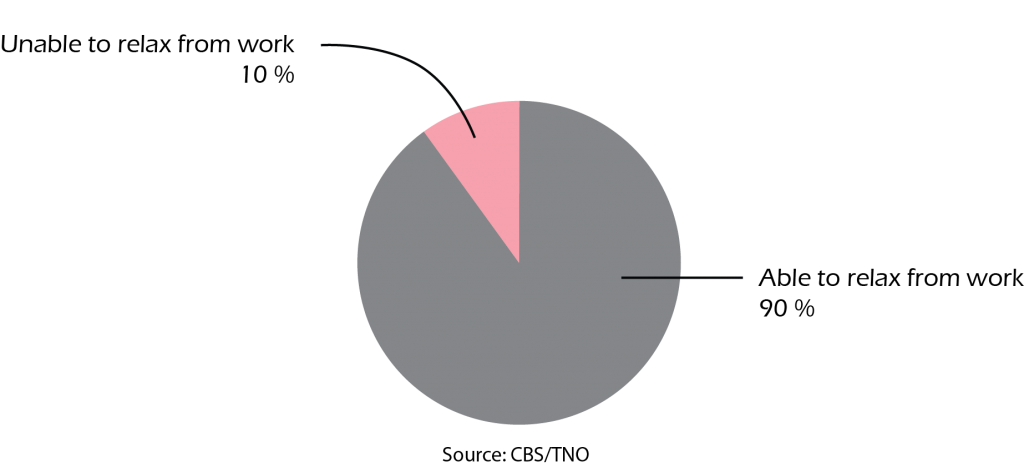
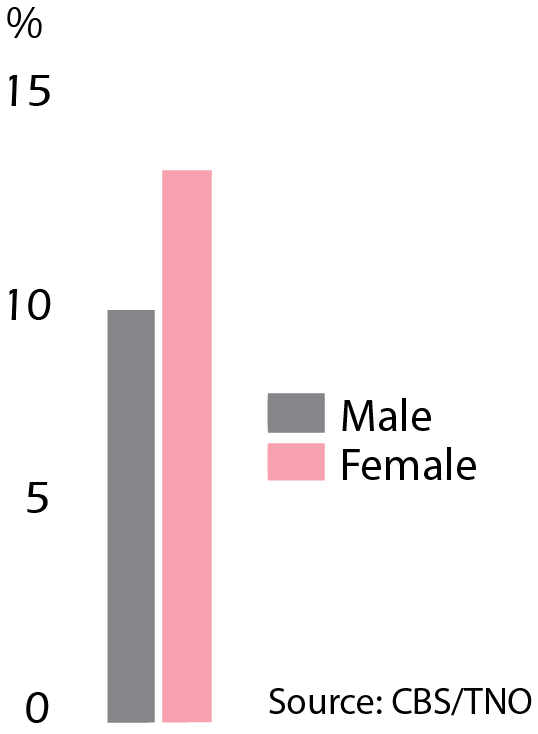
On-the-Job Recovery
Recovery is the process that repairs the negative effects of heavy workload and lets the body become at peace again (Sonnentag, 2004). During work the human body uses both physical and psychological resources (Meijman, 1998). At one certain point those resources might get depleted due to the experienced workload, which may lead to a long-term strain process.
To recover from those load reactions, off-job activities should not occupy the same type of resources needed for work. Also, activities that have a compulsory character, like doing the household, paying the bills or taking care of children draw on the same resources. Activities that do help the recovery process are low-effort, relaxation, social, physical and creative activities (Durepos, 2016).

Sonnetag and Fitz (2007) suggest that the experiences behind the above mentioned activities form the key to recover from job strain. They present four distinct experiences, namely psychological detachment, relaxation, mastery and control. Psychological detachment happens only if employees are able to switch off from work mentally. Relaxation is described as an active experience that involves relaxing of the body and mind. Mastery experiences build up new internal resources like skills and competencies. Control is the experience when somebody is able to make their own choice on what activities to pursue and how to pursue them.
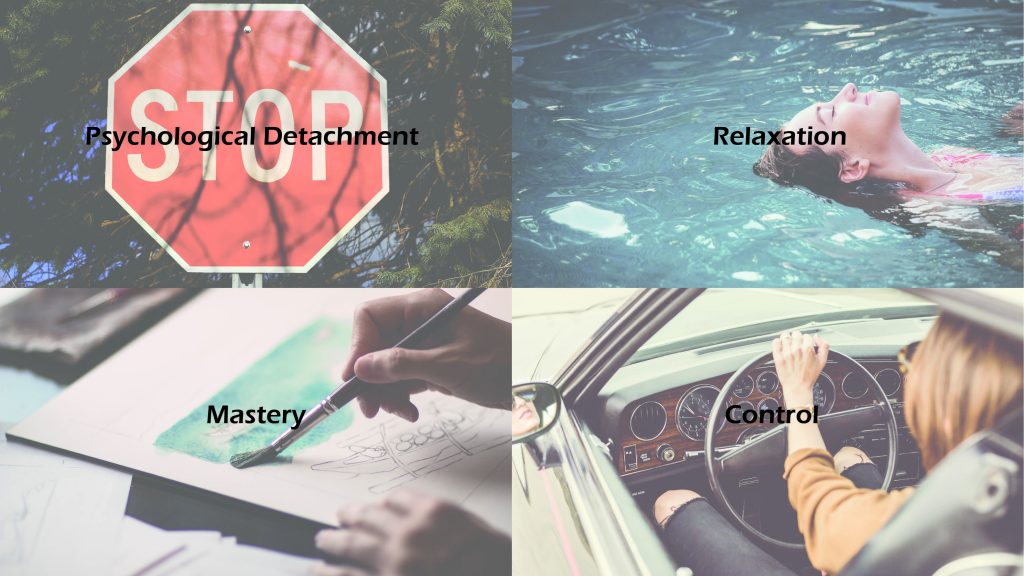
Considering the amount of time people spend at work it could be beneficial to look at recovery possibilities there. Breaks taken at work are called internal recovery moments which help the employee to stay focused and productive on the work at hand (Geurts, 2006). These breaks can vary in length and in recovery result. A lunch break with co-workers for instance does not necessary contribute to recovery, but employees that engage in activities that have a mixture of recovery experiences (psychological detachment, relaxation, mastery and control) report higher levels of attentiveness and less fatigue (Fritz, 2013). Recovery experiences on the job could thus support the employee during work, but could also minimize the need for recovery after work.
Relaxation and Recovery
Relaxation activities seem to be the best fit for an office environment. Relaxation techniques draw upon different resources of the body so recovery of the body and of the mind can take place. Examples of commonly used mind and body relaxation techniques are meditation, yoga, mindfulness and massage.
Most relaxation activities are focused on finding a balance between the body and mind. They do so by performing a sort of repetition of an activity while breathing consciously and focusing on bodily activities like the heartbeat (Sieratzki, 2002).

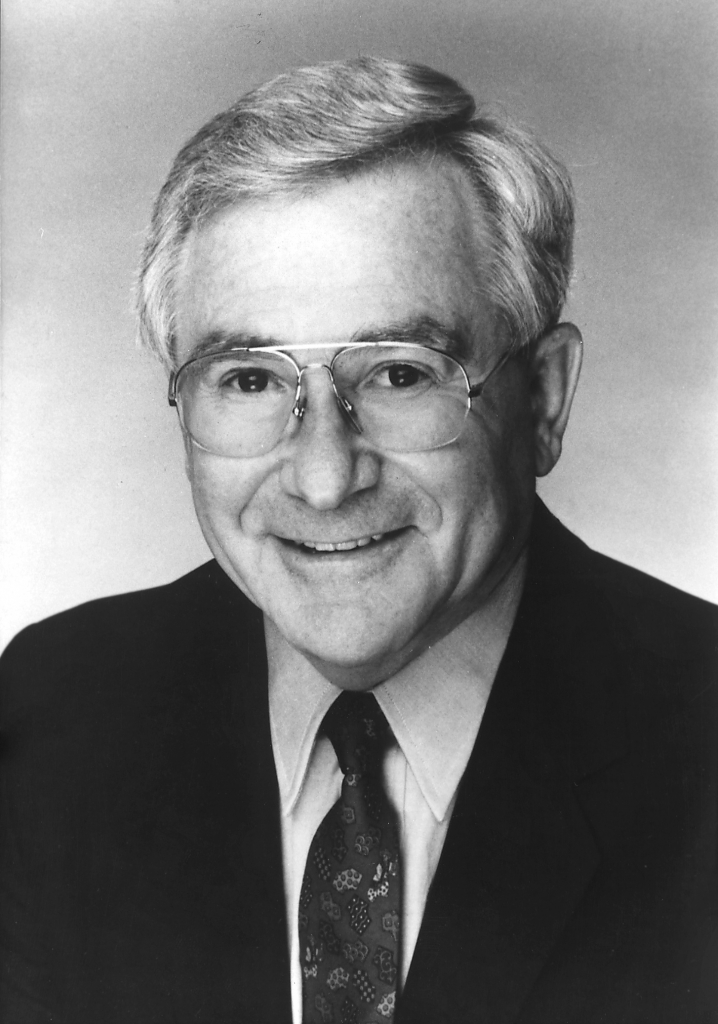
Medical doctor Herbert Benson (born 1935) has been researching body and mind relaxation techniques since 50 years and found a connection between the before-mentioned techniques. It is what he calls the relaxation response. The basics of the relaxation response are as follows; the repetition of a sound, word, phrase, prayer, or muscular activity and a passive return to the repetition whenever distracting thoughts occur. By doing this for minimal 10 minutes, a series of physiological changes are triggered that help to protect the human from stress. The relaxation response is thus a valuable method to use when experiencing tension in the body and in the mind.
This could mean a solution for the people suffering from a heavy workload in office spaces. Letting employers touch the smart garment in a repetitive manner could potentially elicit the relaxation response, which enables the body to relax, detach mentally from work and recover.
Design Vision
CONTEXT

The chosen context is an office environment. Offices show great potential for the implementation of a smart garment specially one that is made from a combination of silk and stainless steel.
TARGET GROUP
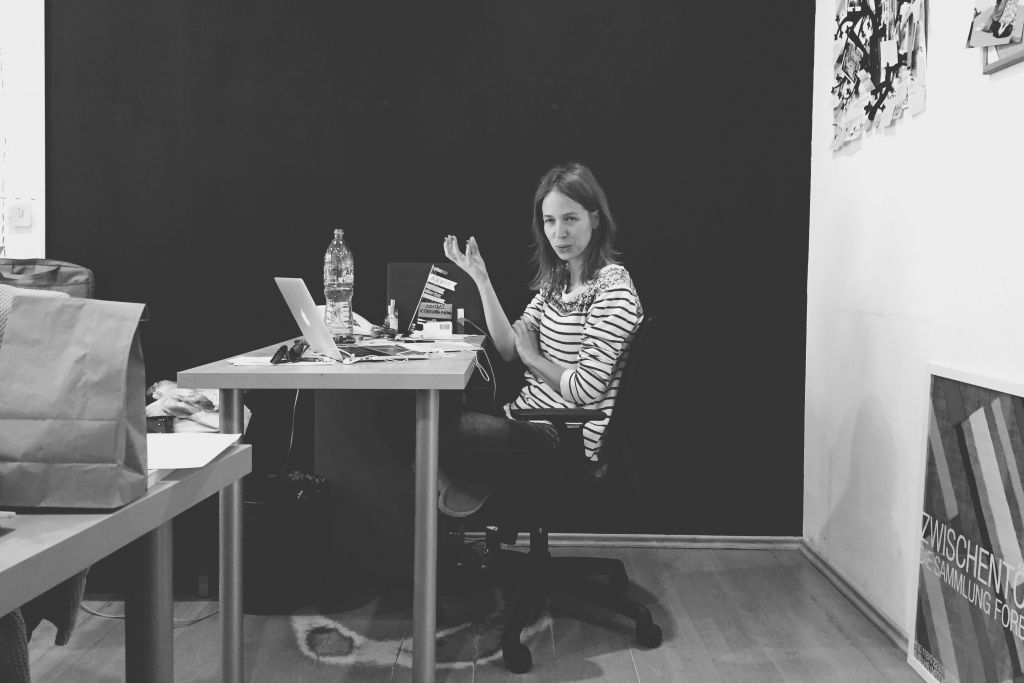
The chosen target group are female employees aged 25 to 35 that deal with a high workload in an office environment and find it hard to relax.
EFFECT

An on-the-job recovery experience is expected to help the female employees to relax and detach from work which ultimately enables them to stay in control of their body and mind activities. With use of the relaxation response these effects are probable.
Interaction Vision
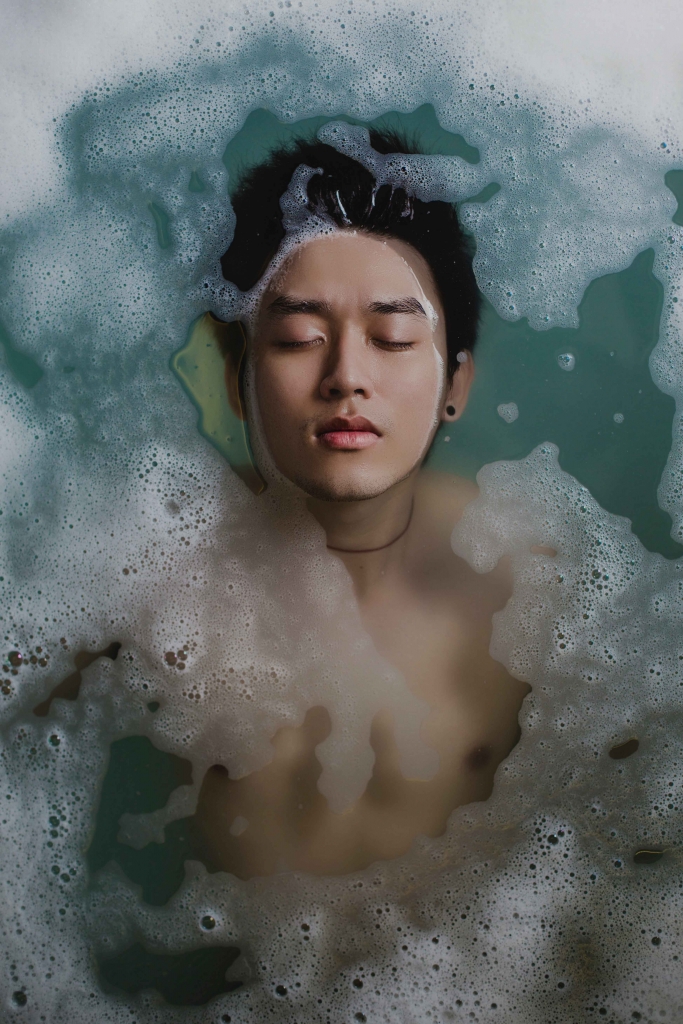
An interaction vision is a metaphor that helps me to communicate interaction qualities by creating a representation of the mood, feeling and experience that the garment should give the user when interacting with it. My vision on the interaction is that it should feel like taking a warm bath. Its qualities are that it is a calm, natural and intimate interaction that relaxes you afterwards.
The New Story Board
The following storyboards show the contradiction between the office as is experienced right now by the target group and how the experience could change when using the smart garment. As a result, the employee will feel much more rested in the morning, focused during the day and energized during the evening when taking a few minutes a day relaxing with the smart garment.
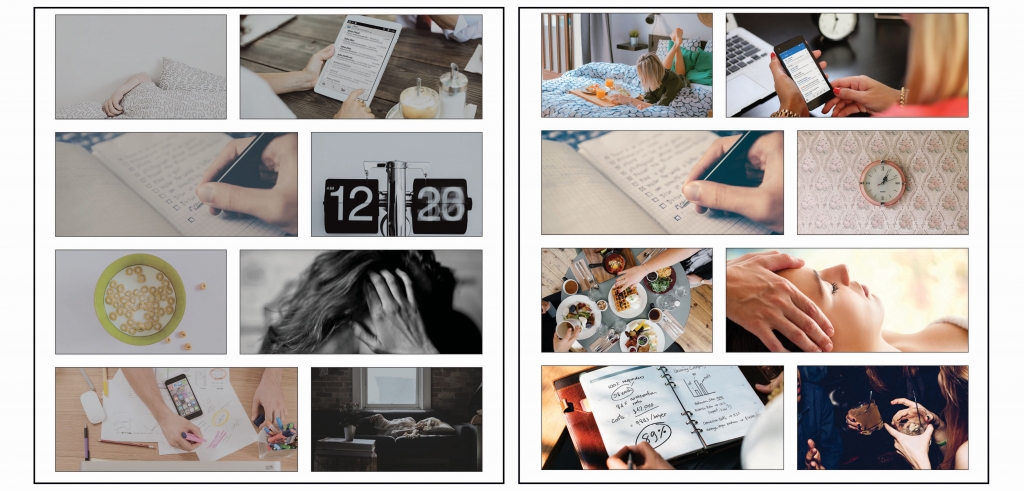
Recovery and Technology
The moment where the employee gets into the relaxation will last approximately 10 minutes. During this time the employee will interact with the garment physically in a rhythmic way, breathe consciously but also focus on bodily experiences like feeling the heartbeat. While the physical activity of the garment would be touching the capacitive fibres in a rhythmic way, an output should be designed as well to strengthen the recovery experience.
BREATH
Breathing and the beating of the heart are also rhythmic sensations, thus they could have a beneficial impact on the recovery experience and function as an output of the system. Breathing is something that you can make visual, audible or sensible. Though the most calming effect will be visual or sensible since hearing somebody’s breath could also become eerie. Therefore making the breathing output visual and sensible could both work well.
HEARTBEAT
A heartbeat is something that you can make visual, audible or sensible. As Allan Fenigstein states in the discussion of his research that hearing of feeling a heartbeat at rest leads to greater self-focus than does exposure to an irrelevant sound. Something that is important when wanting the relaxation response to be effective. Making a heartbeat audible is not practical in the office environment, therefore making the heartbeat sensible makes more sense.
Examples of bodily activities imitated in textiles
Putting this in a technological perspective I looked for examples how to incorporate these sensations in the smart garment. An example of breathing made visual is this dress by CuteCircuit. It has a breathing sensor that is connected to LEDs. The color of the LEDs changes depending on how fast the wearer is breathing. Examples of breathing made sensible are these dresses by Ying Gao. They are embedded with tiny DC motors to move parts of the dresses in specific patterns. It looks like the dress is breathing. An example of a heartbeat made sensible can be found in the Fan Jersey. It is a shirt that fans can wear to connect to their favourite American football players. The vibrations happen real-time with the game, creating an emotional attachment for the wearer. The exact placement of the electronics is dependent on the design of the garment.
Choice of Electronics

Using the same technology from these examples makes the functionality of the office garment much more probable. DC motors, LEDs and vibration motors will provide the needed functionality to create a breathing sequence and heartbeat sequence. The exact placement of the electronics is dependent on the design of the garment.
Design Aesthetics
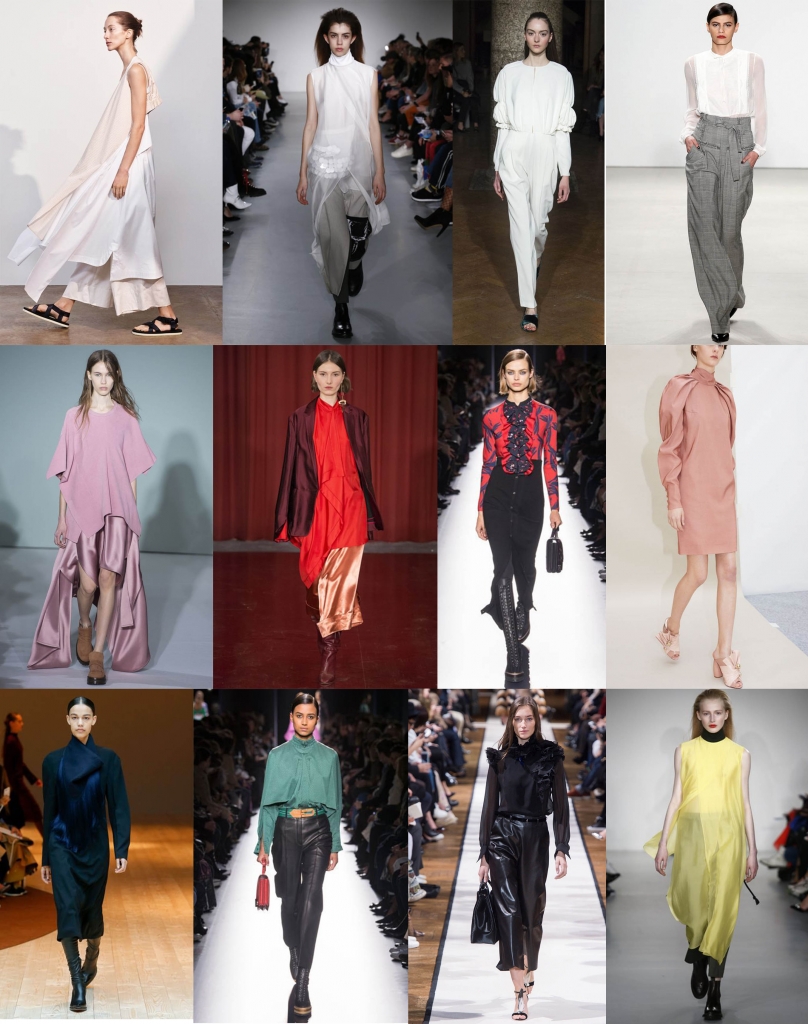
In January and February the big fashion houses exposed their new pieces during different fashion shows in Milan, Paris, New York and London. The trends for autumn and winter of 2017 are displayed in the pictures on the right. They serve as an inspiration for the design of the smart garment. There are a lot of mixtures between the trends which creates a playful pallet of styles. Puffy sleeves are perfect for placing capacitive fibers since they will not be pressed against the skin too much. Using layers in the design is also perfect to cover up electronic components and electrical wires.
Considering the type of garment, a blouse with a romantic expression would be the best fit with the office context, the target group, the material properties and qualities of silk and the trends. Also a blouse enables the wearer to combine it with other garments like a trouser or a skirt to let their personal style be incorporated in the final look as well. The romantic look fits these areas best and displays a women that is confident, in control and super feminine.
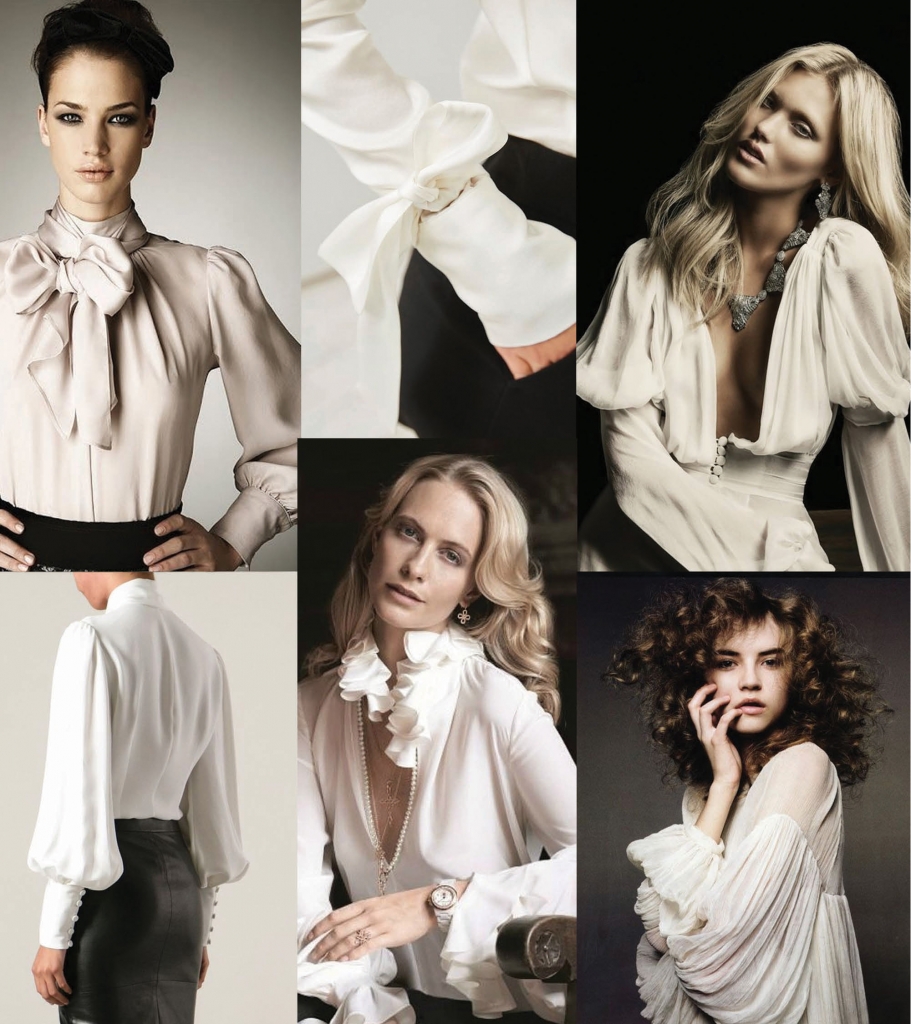
Final Design: Ensō
Ensō is a blouse designed for female employees that work in office environments aged 25 to 35 that are not able to relax from work. In Zen, ensō is a circle that expresses enlightenment, strength and elegance. Ensō provides an on-the-job recovery experience that can be accessed whenever the wearer wants to.
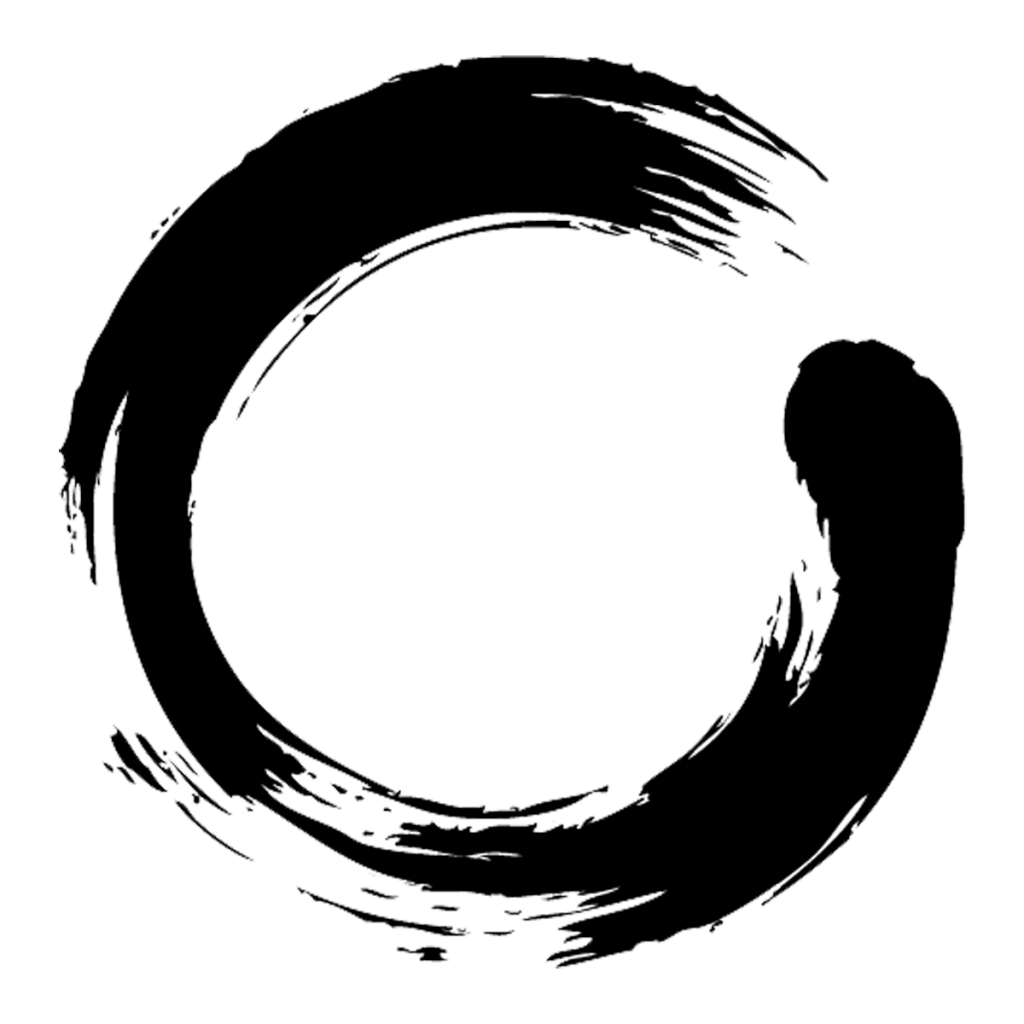


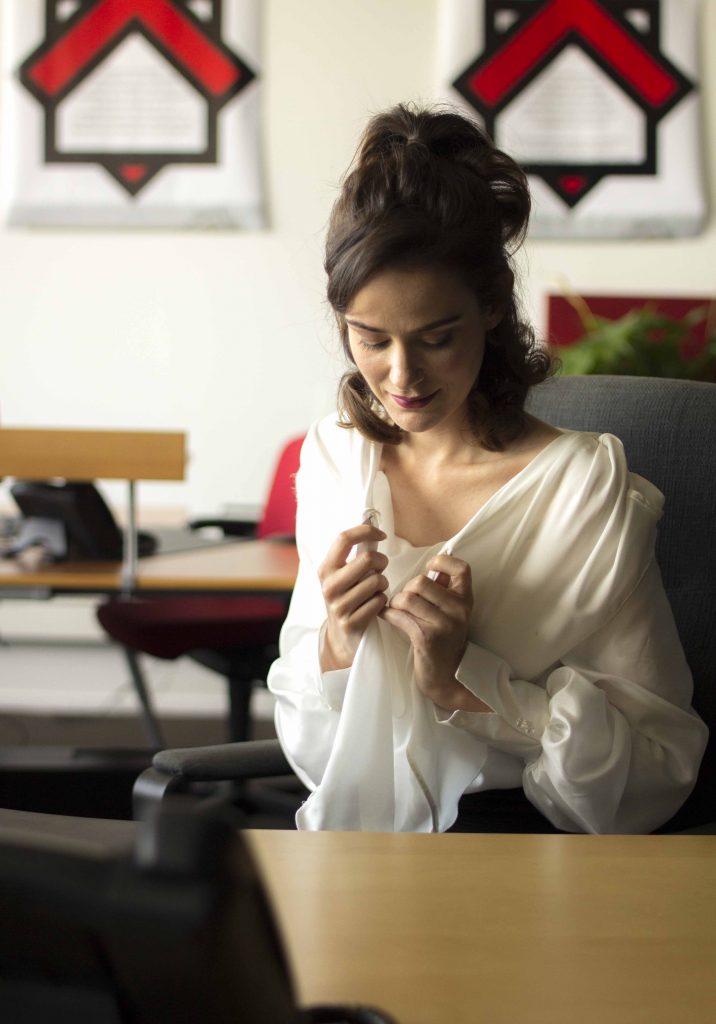
The design of the garment shows four possible ways to wear the garment; total open, front open, back open and total closed. This is a feature that works well for women with a busy schedule since they can adapt their outfit to the situation they are in. Next to that it shows close relation to the trends. The puffy semi see through sleeves and the layered collar are coming straight from the runway.
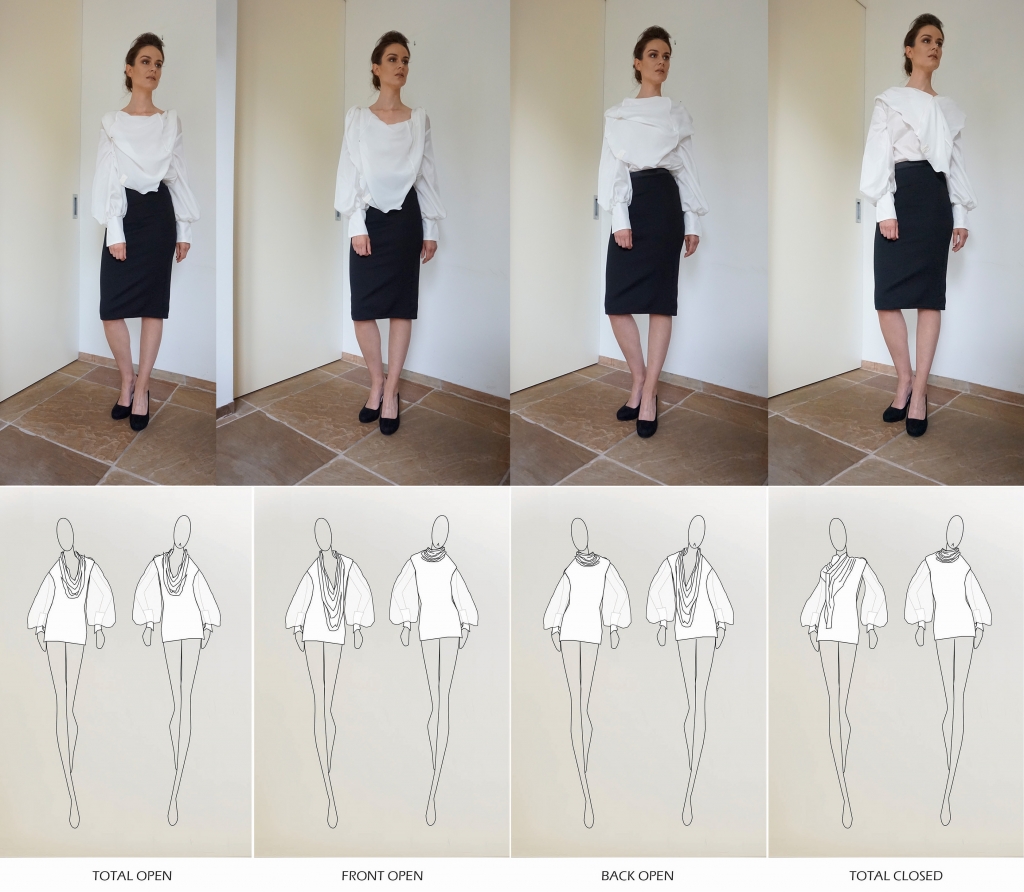
By using body and mind relaxation techniques a choice of electronics was made that could imitate bodily activities. These are a vibration motor that resembles a heartbeat at rest, a DC motor that mimics the movement of the body while breathing and LEDs that provide a breathing exercise for wearers to engage in.
By closing the collar with two magnets the user can control when she wants to start the relaxation process.
The small piece on the collar functions as a fidget tool to keep the wearer relaxed and focused while working. The touch sensitive fiber in the small piece of fabric is connected to the vibration motor which is situated in the neckline.
The wearer can start the breathing exercise by caressing the left sleeve. The touch sensitive fibers situated here are connected to the DC motor in the neck which provide a breathing motion and to the LEDs in the cuff which provide a breathing visualization.
The experience the user has while interacting with the garment is displayed in the video below.
Details of Technology
Whenever the user wants to use the relaxation mode of the garment, she should close the front with two little magnets. This interaction closes first of all the electric circuit. Next to that it is an activity that expresses taking a step back from work almost literally; you pull the sides of the collar to the front and close bring the magnets together. In Dutch we call this ‘je even terug trekken’.
The location of the touch sensitive fibers that start the vibration motor is situated in the collar. The fibers that start the breathing exercise thus LEDs and DC motor are situated in the left sleeve. The connections of the capacitive fibers and their locations are presented in green and come together in the Teensy 3.2 microprocessor. The connections and locations of the system components are presented in red and also come together in the Teensy 3.2.
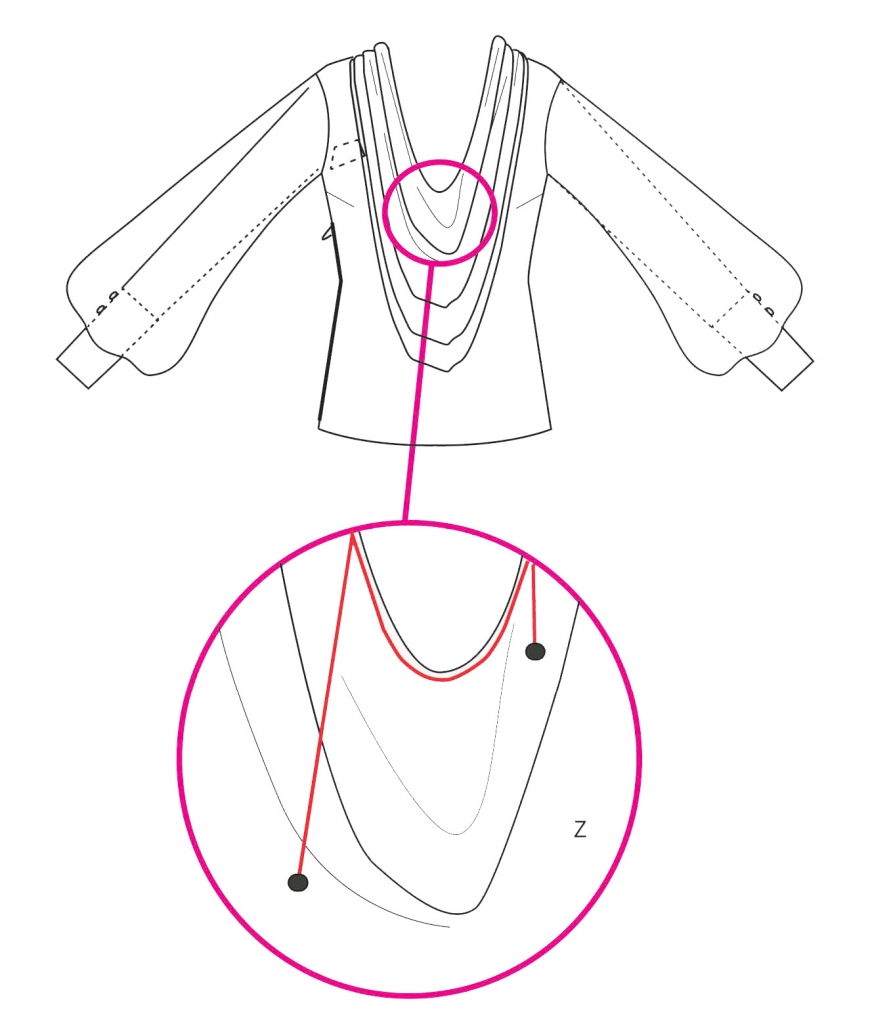
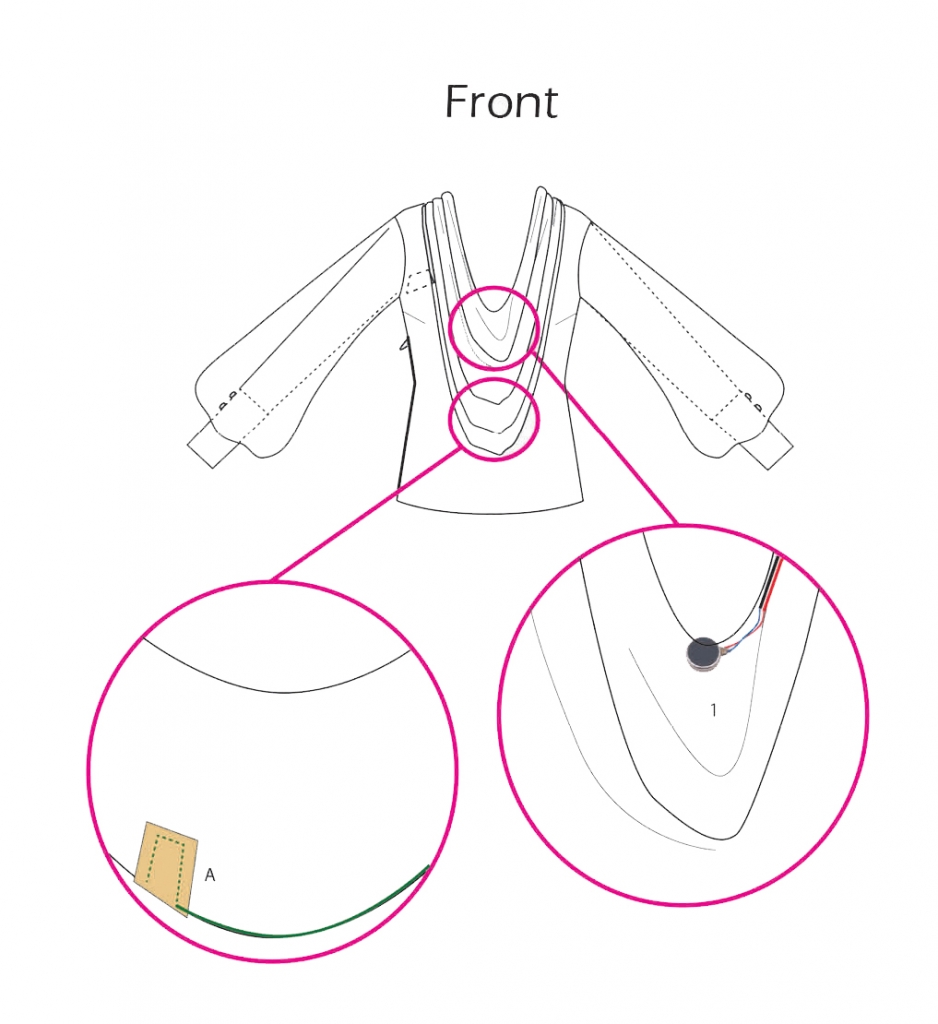
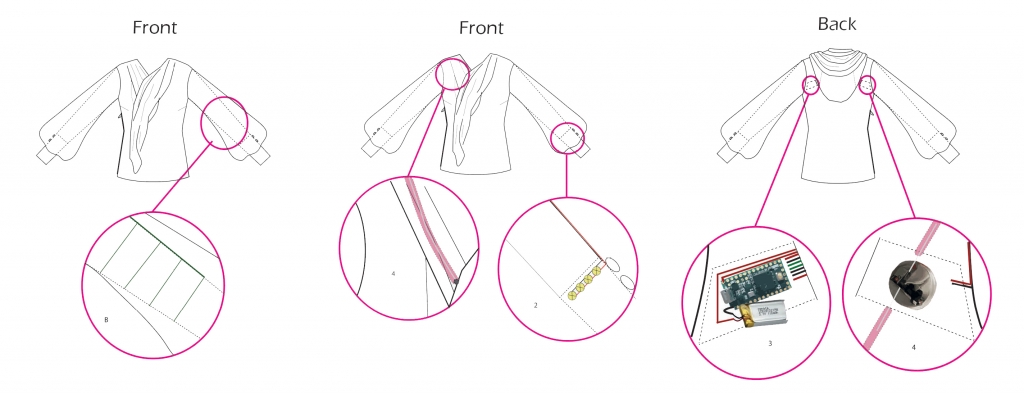
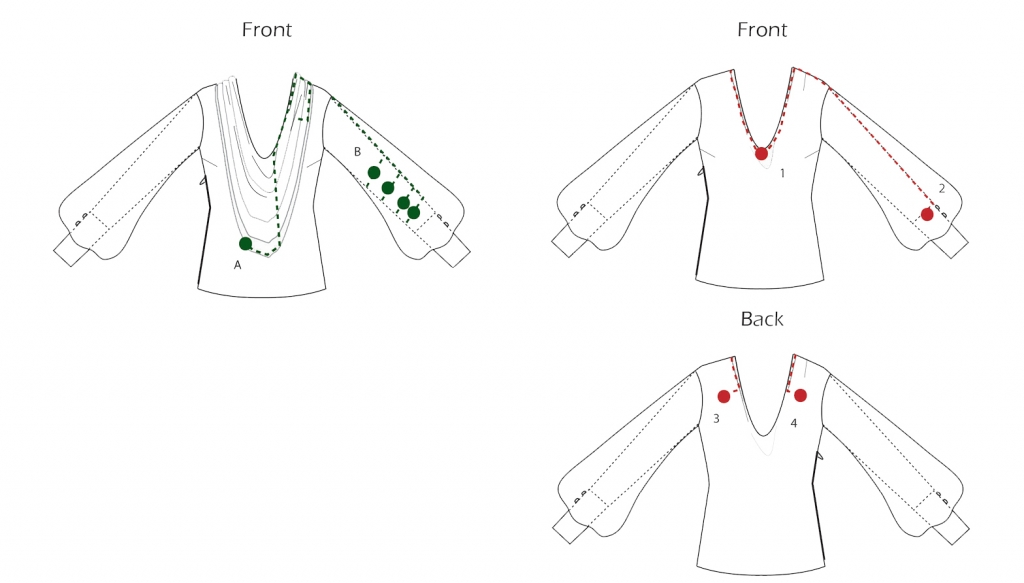
Final User Test
To understand if the final design meets the set requirements it is important to do a final user test. During this user test different aspects will be tested. These are usability, comfort and aesthetics. Subjects were four female office employees between 25 and 35 that have experienced work load within the office environment.
Thanks!
Working on this project has taught me how valuable it is to work together with people from different backgrounds. Getting inspired by the stories of Marina Toeters and her perspective on smart textile design, being passionate and eager to learn more about smart fashion design because of Linda Plaude, understanding limits and possibilities of smart design from Kaspar Jansen, staying critical with every step from Sadiq van Overbeek, being able to get in touch with the user on a deeper level from Marieke Sonneveld, getting to know electronic components and their magic from Hans Franken, understanding how to tackle the design process from Erik Jepma, plotting the perfect Arduino brain with the experience of Michiel van Overbeek, wanting to do more for our planet due to the stories of Peter van Akkeren, understanding the value of relaxation from Cathrien van Dam, improving my fashion designer skills with the help of Haute Couture label GHIMELLS and finally being able to communicate the value of my design through the eyes of Beyond Awakening Collective and Emma Notenboom.
